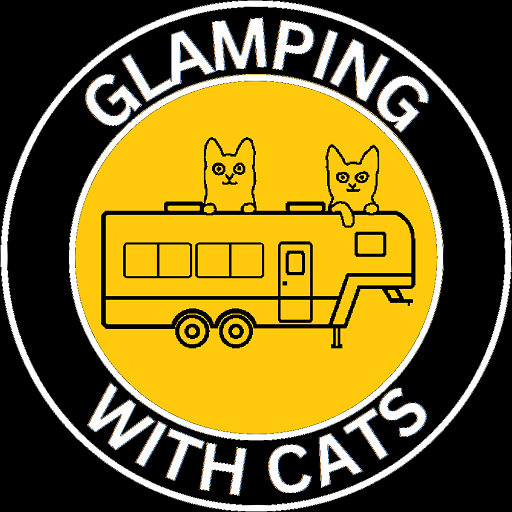Yellowstone National Park, May 2025
Since we didn’t get back to the trailer until 10 pm last night and wrote the blogs for Day 8 until after midnight, we didn’t get up until late. We planned on having a more relaxing day.
Today we focused on going to West Thumb to walk the boardwalk around the thermal features and visit the Grant Village Visitors Center. If you read some of the other posts (i.e., Canyon Visitor Center), you might remember that the West Thumb of Yellowstone Lake is a secondary caldera. West Thumb has a large number of geothermal features. Yesterday, Kate posted a video of the mud geyser at West Thumb. That mud geyser is still one of Kate’s favorites, so far.
Many of the geothermal features are named and tracked by geyser watchers. They look for new geothermal features and changes in the geothermal features. Below is a map of the boardwalk at West Thumb Geyser Basin and the geothermal features. (Note: yesterday’s video was not on the boardwalk.) Oddly, West Thumb Geyser Basin has very few geysers. Mainly, this location has hot springs and mudpots. The few geysers that it has are active, but they erupt infrequently.
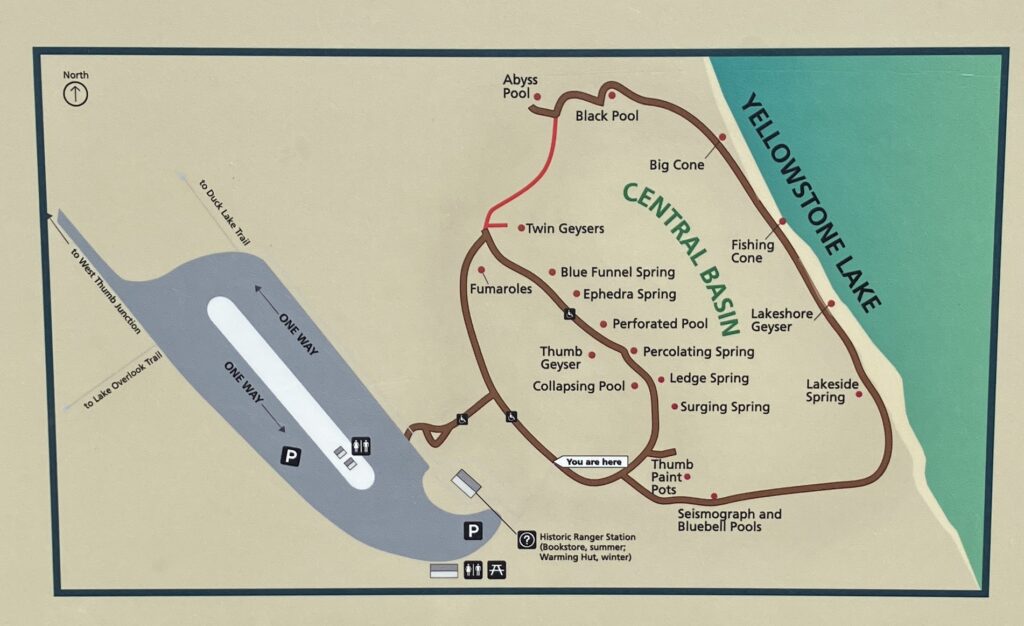
Below are the pictures of the geothermal features. (Note: Kate appears in many photographs, but Kate is not one of the geothermal features.) The colors in the hot springs are determined by the bacteria that grow in them. The bacteria that can grow in them are determined by the temperature and pH of the pools.
Many of the pictures below use a polarizing filter to reduce the glare. This makes the hot spring colors clearer to see through the water and more saturated.
Headed to the right around the loop, the first feature is the paint pots.


Just past the paint pot is a placid milky white pool that appears unnamed.

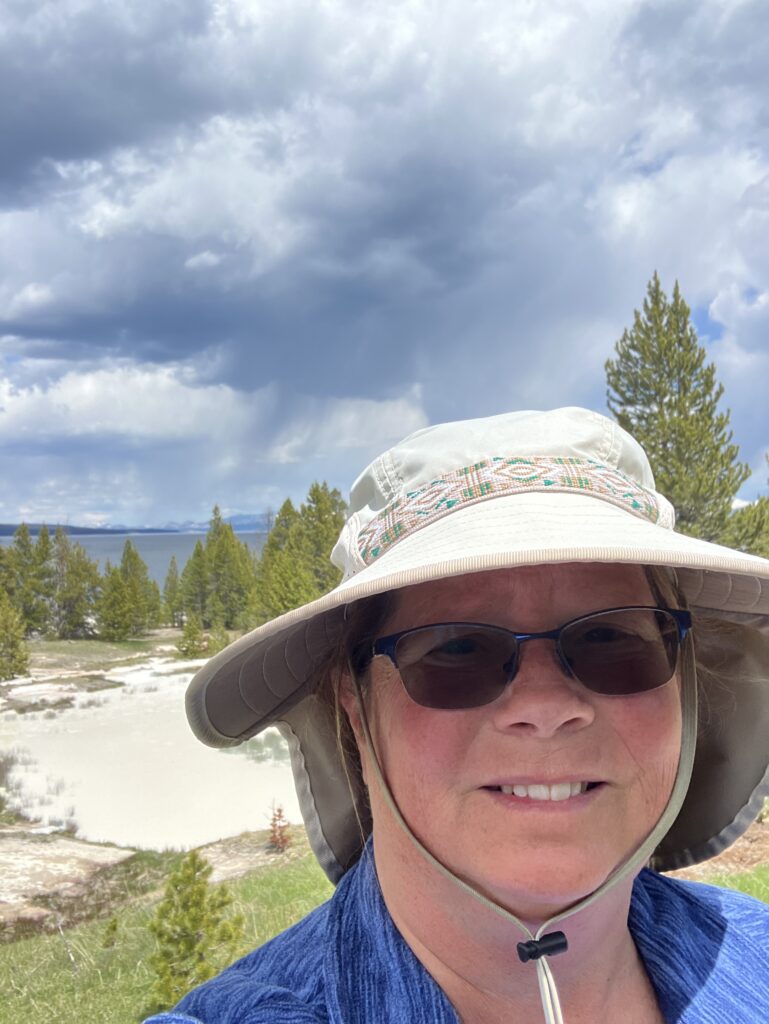
This is followed shortly by the beautiful blue of Seismograph and Bluebell pools
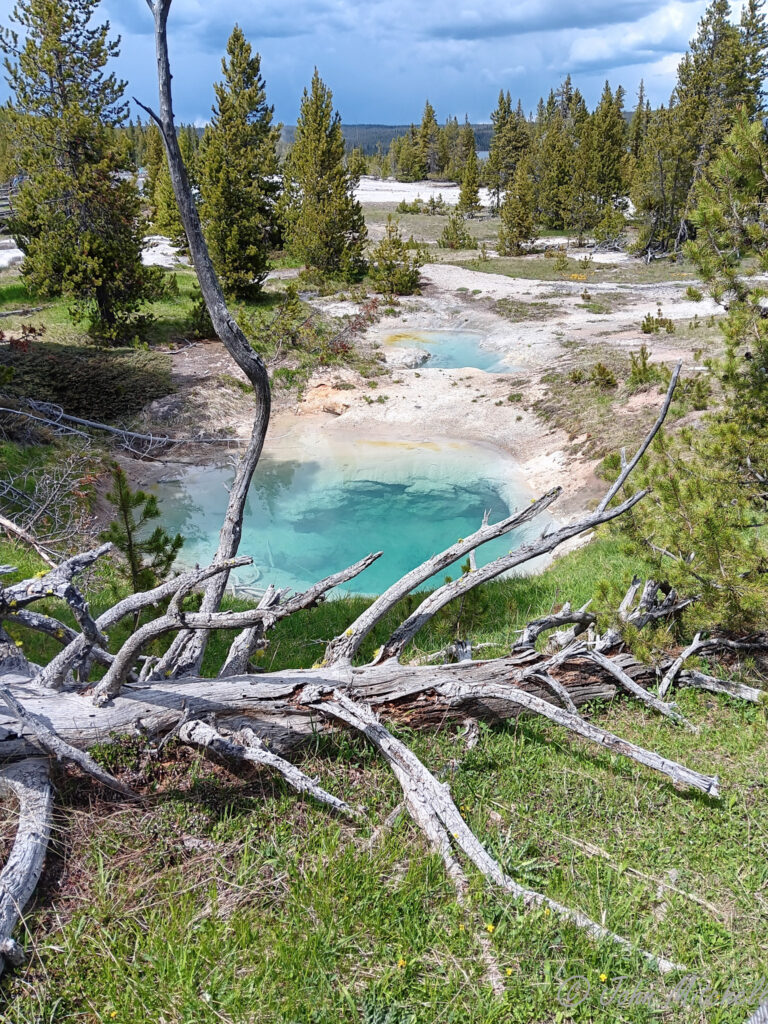
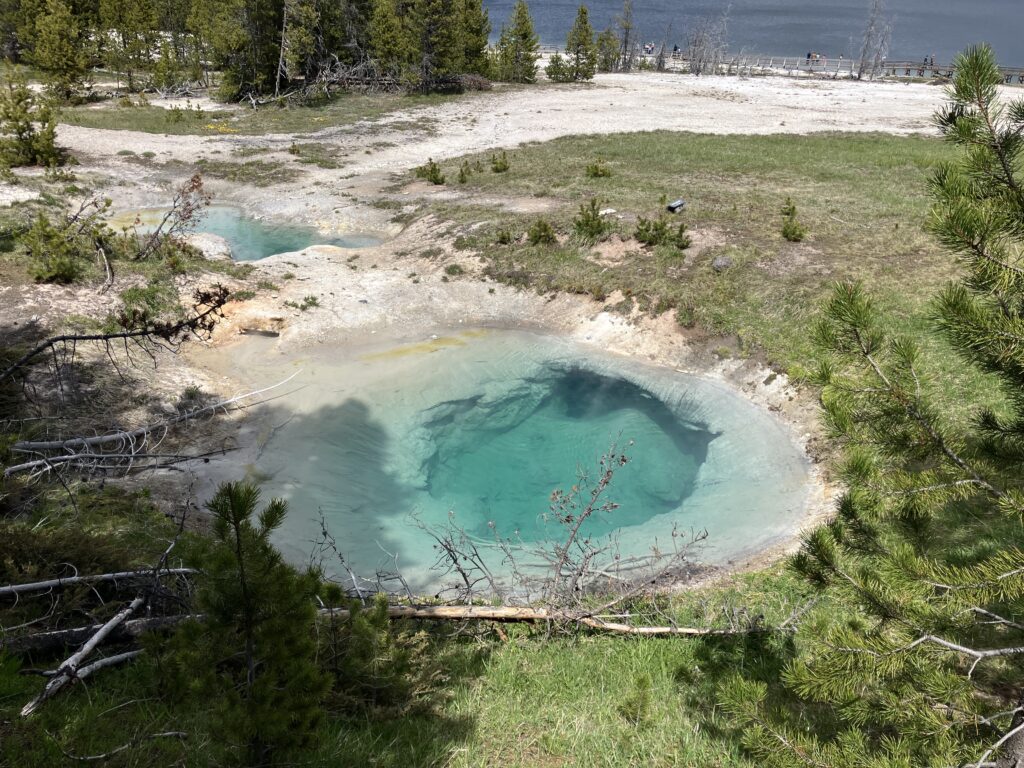
At the shore is Lakeside Spring, Lakeshore Geyser, and several unnamed geothermal features.
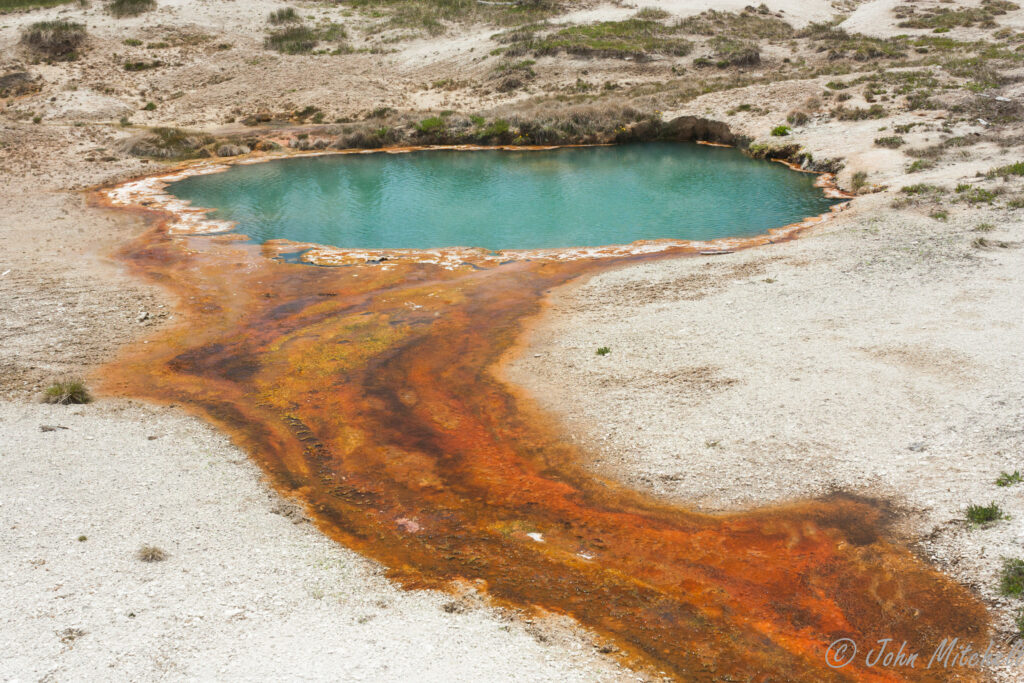
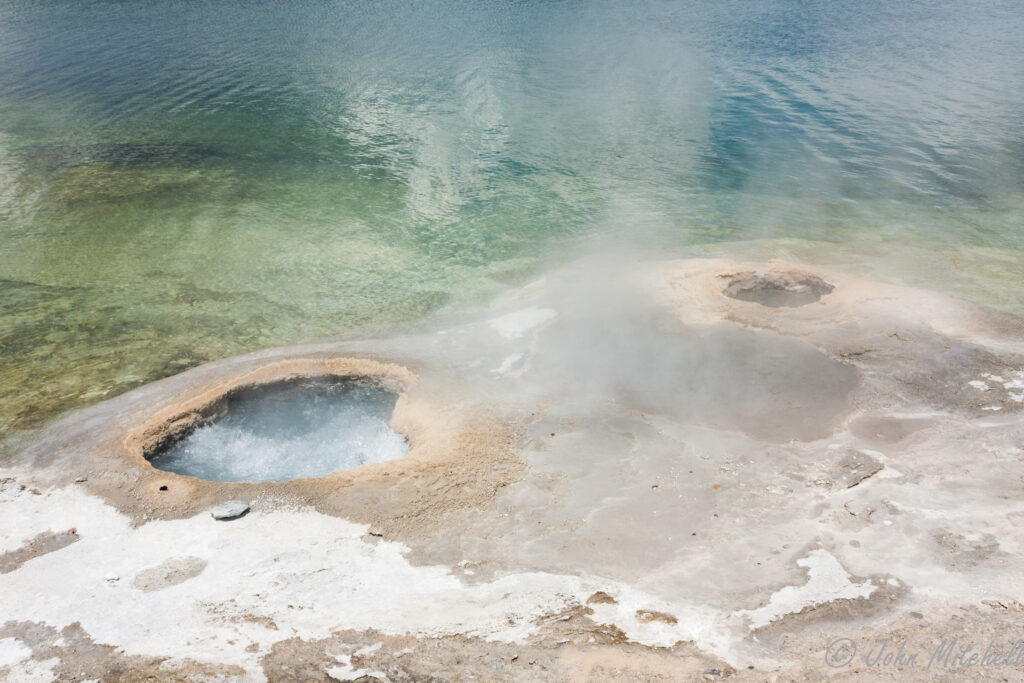
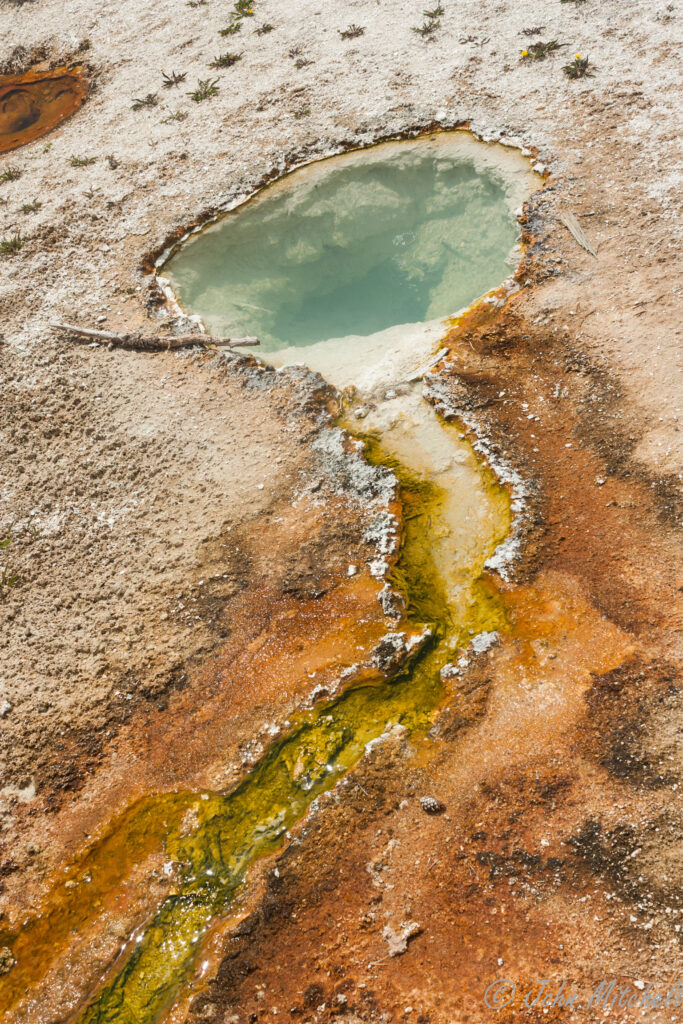
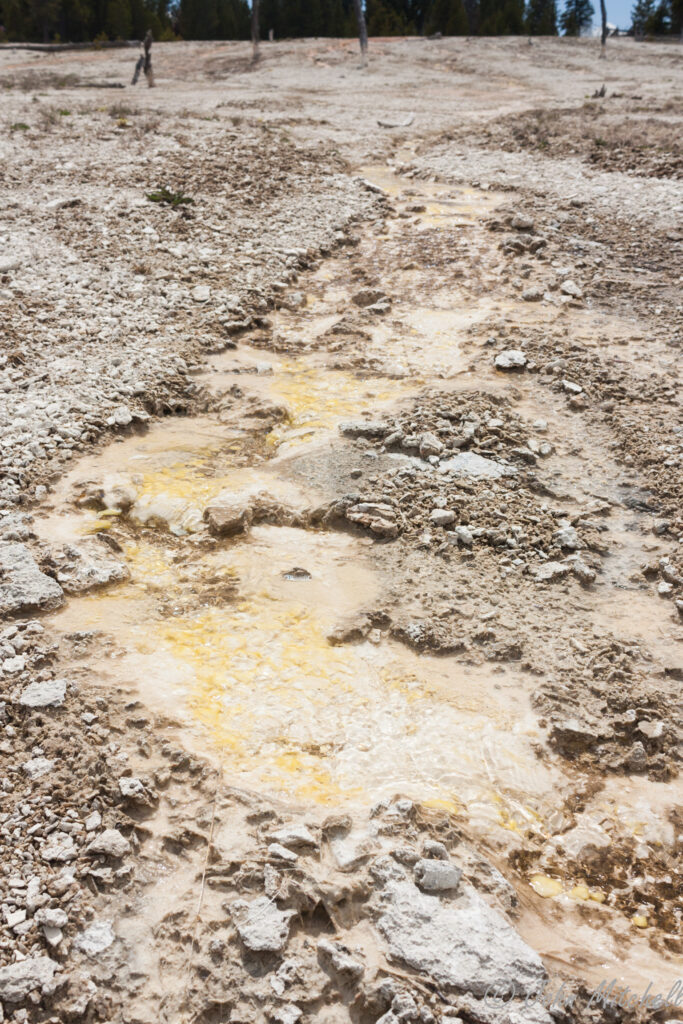
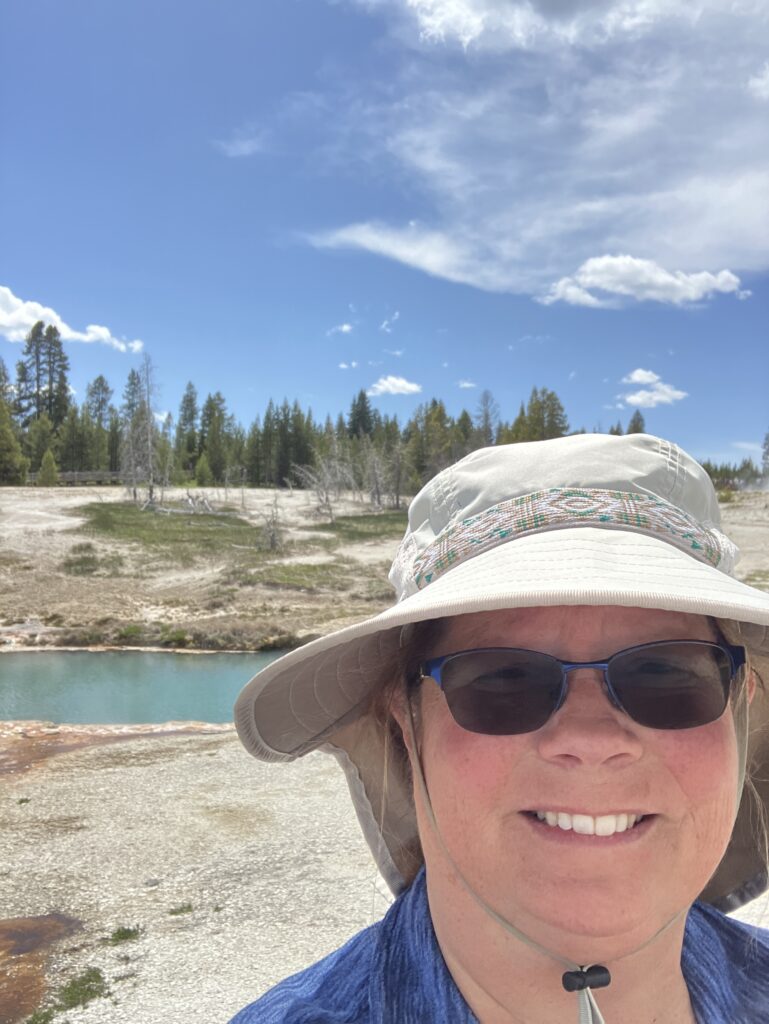
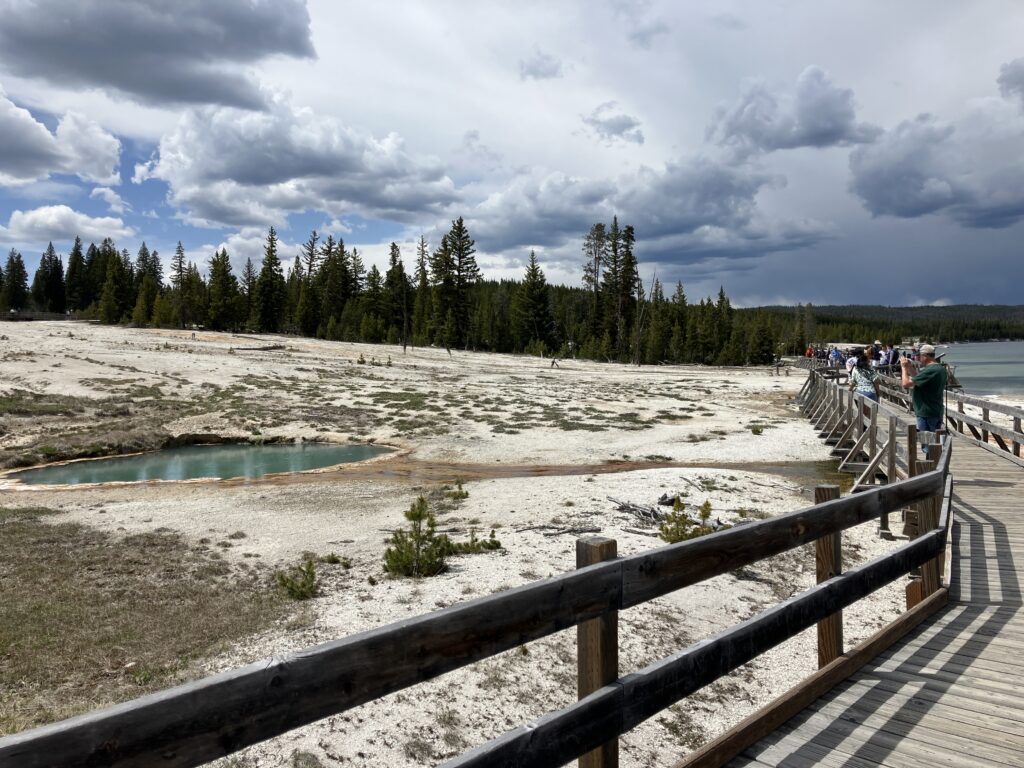
We told you it was a caldera; here is the informational sign to prove it.
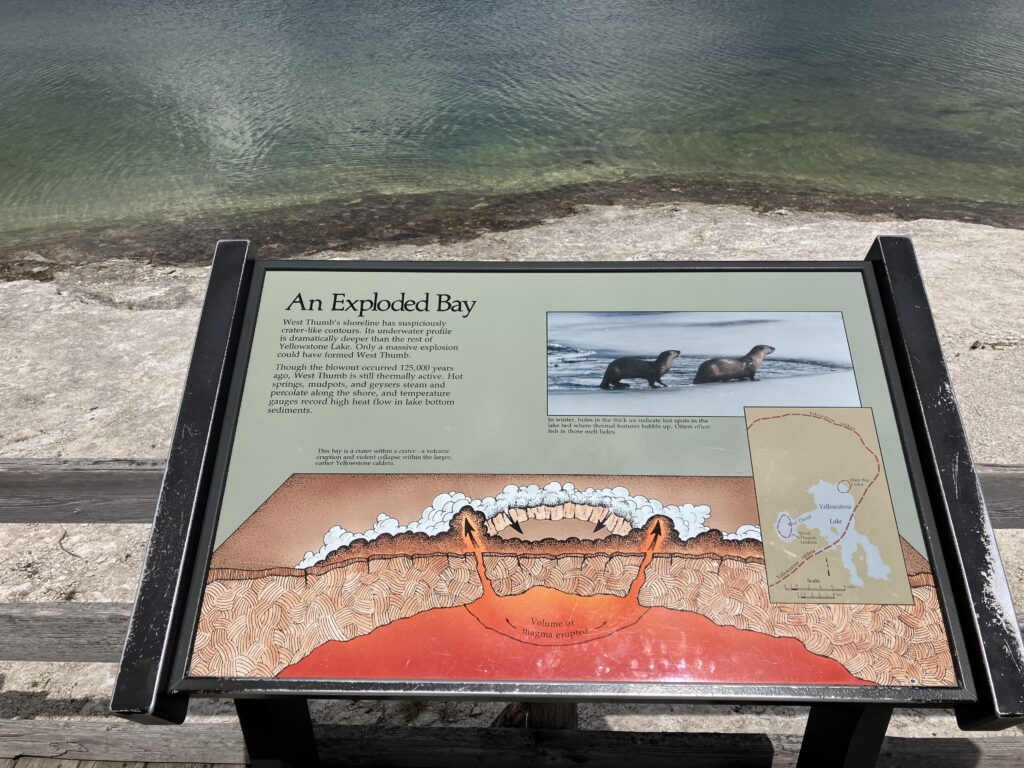
Shortly before fishing cone, there is an unnamed rust red host spring that looks like it has a weird structure in it that is probably something banal, like pine branches.
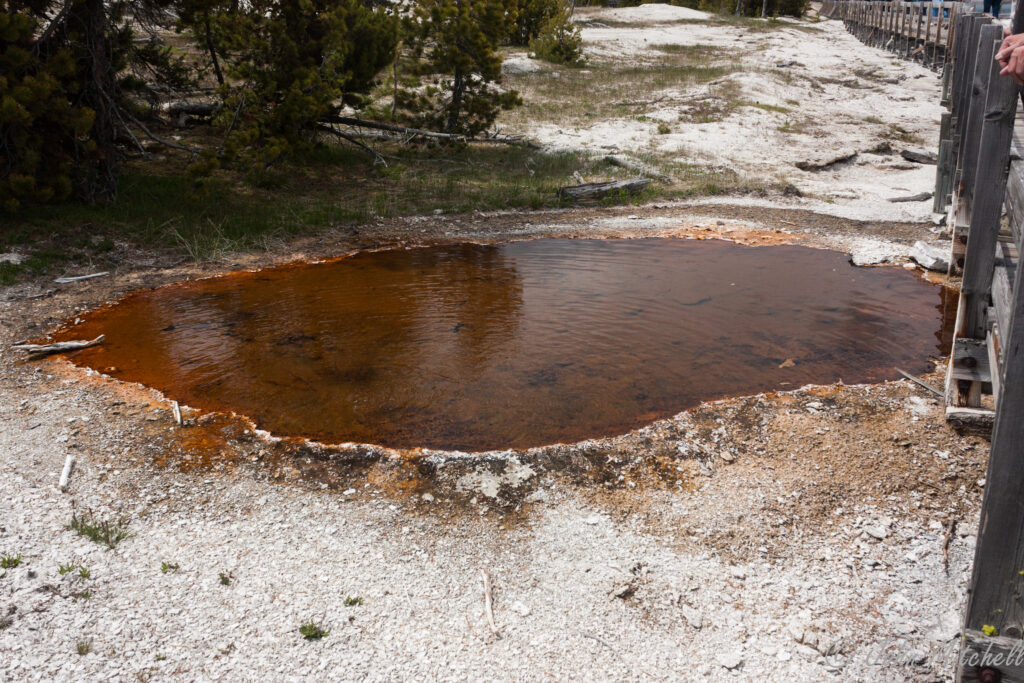
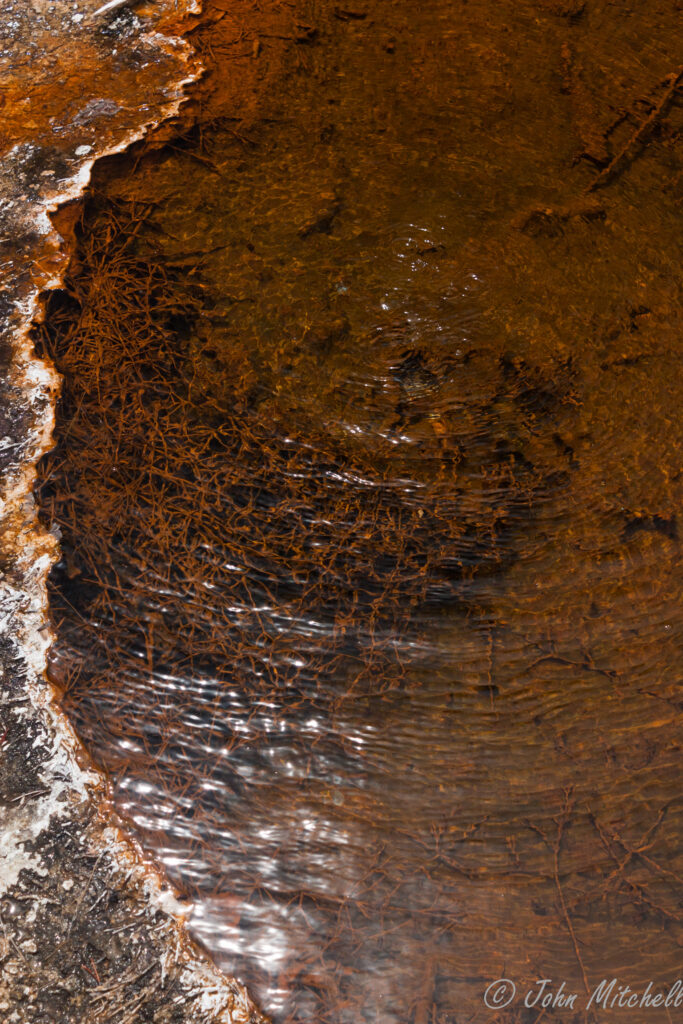
At Fishing Cone, we learned that safety does not come first. This does not look even remotely safe. Yes, that is a split and broken support post.
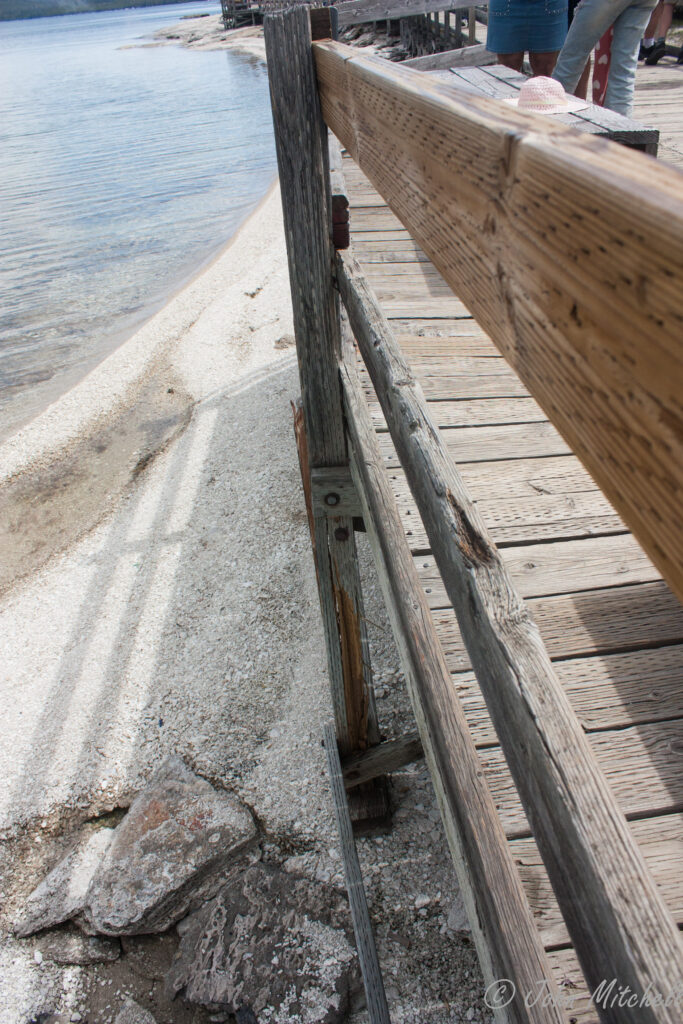
Circling around the outer boardwalk, we came across some of the prettiest and most interesting geothermal features at West Thumb. Supposedly, fisherman would catch fish on a hook, lower them (on the hook) into Fishing Cone hot spring, and use the hot spring to cook them. To us, this seems like a dubious and unsanitary cooking method.
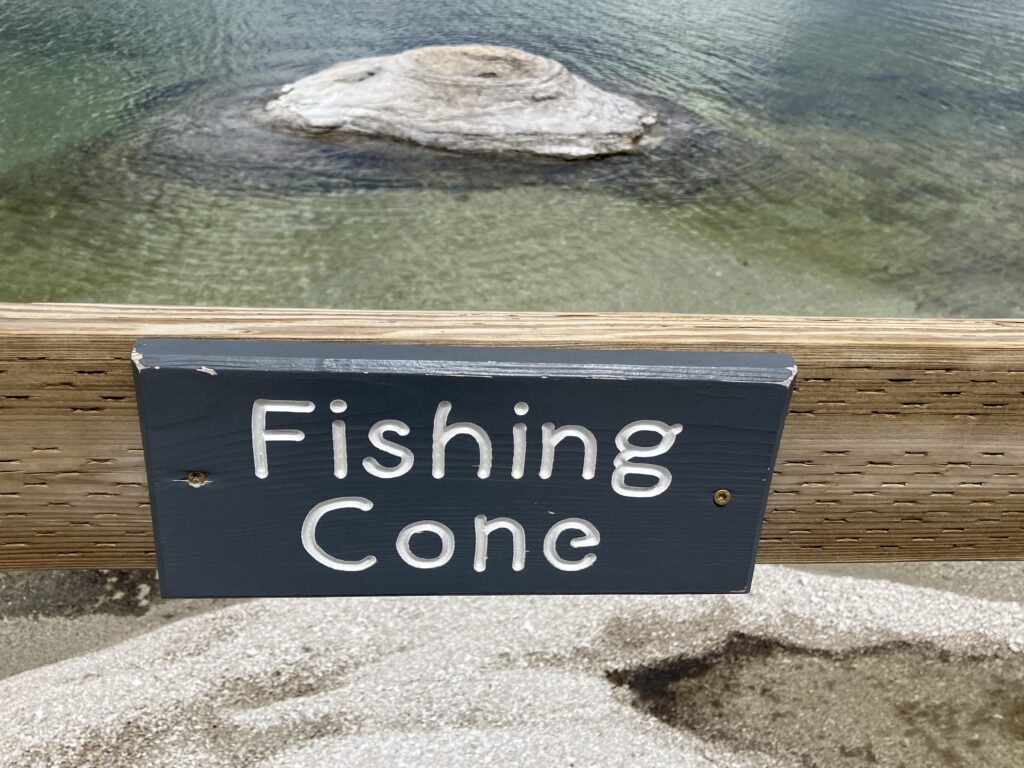
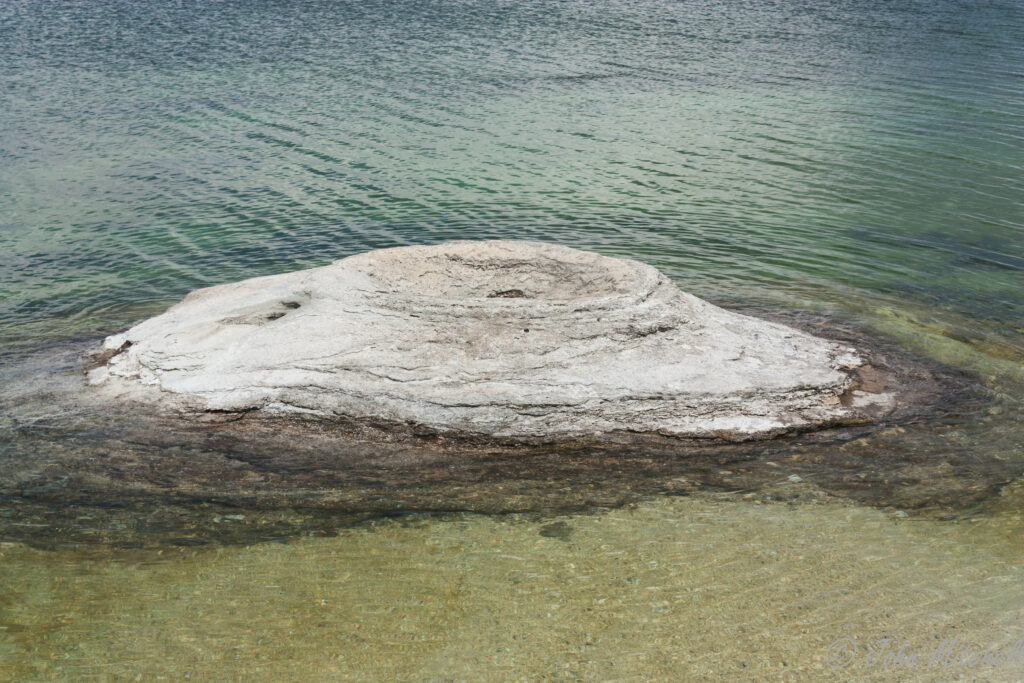
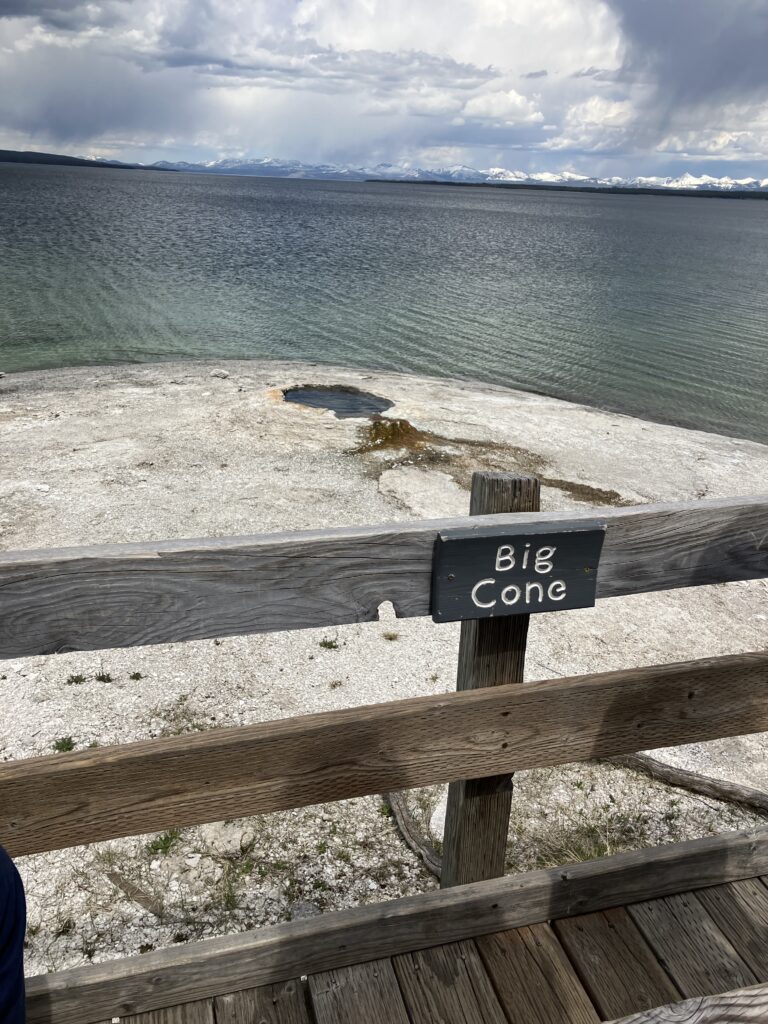

The run off from Black Pool is a brilliant red-orange, but it appears to kill trees. It is probably not safe to drink.


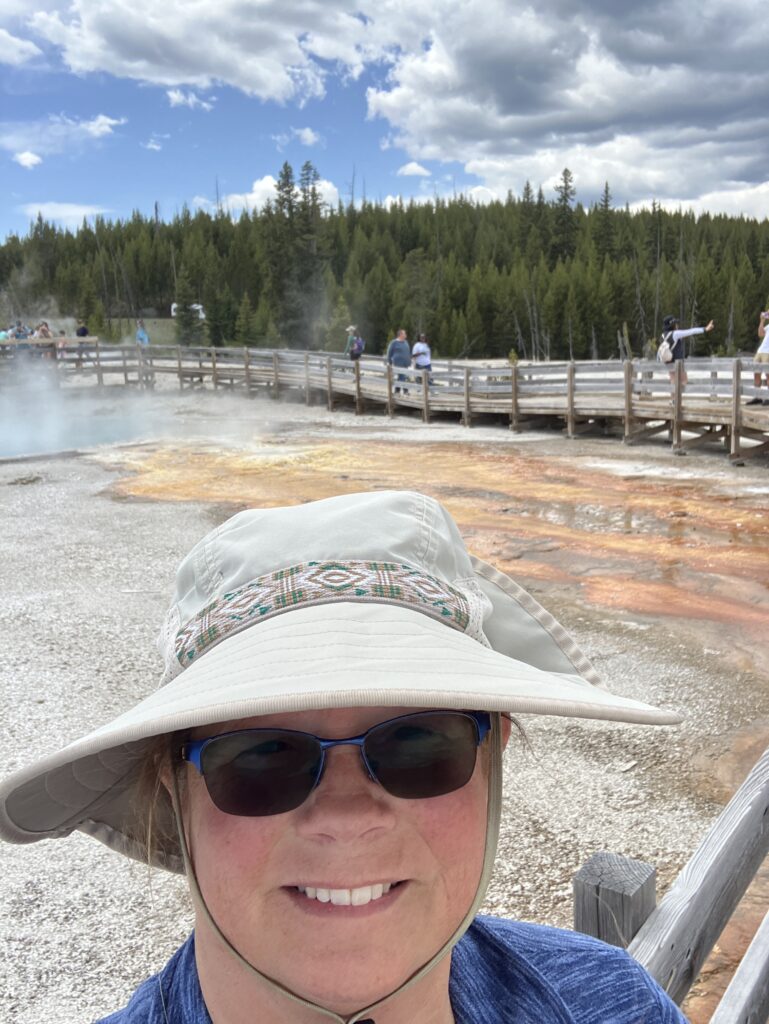
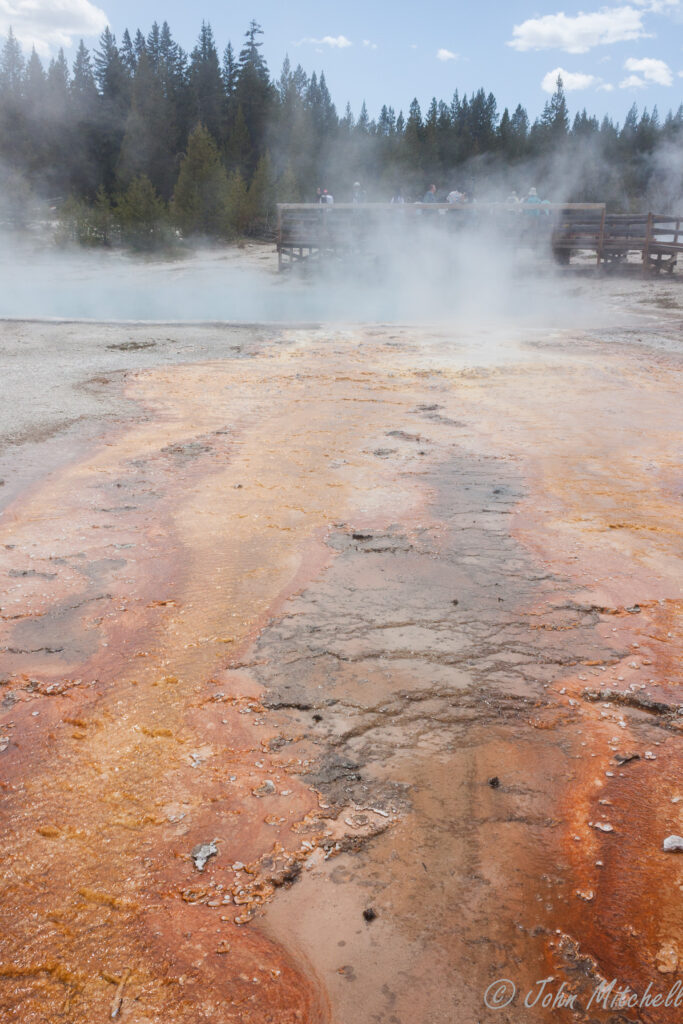
Black Pool and Abyss Pool are both a deep brilliant blue. From watching the tourists, they should have named this place the West Thumb Selfie Station.
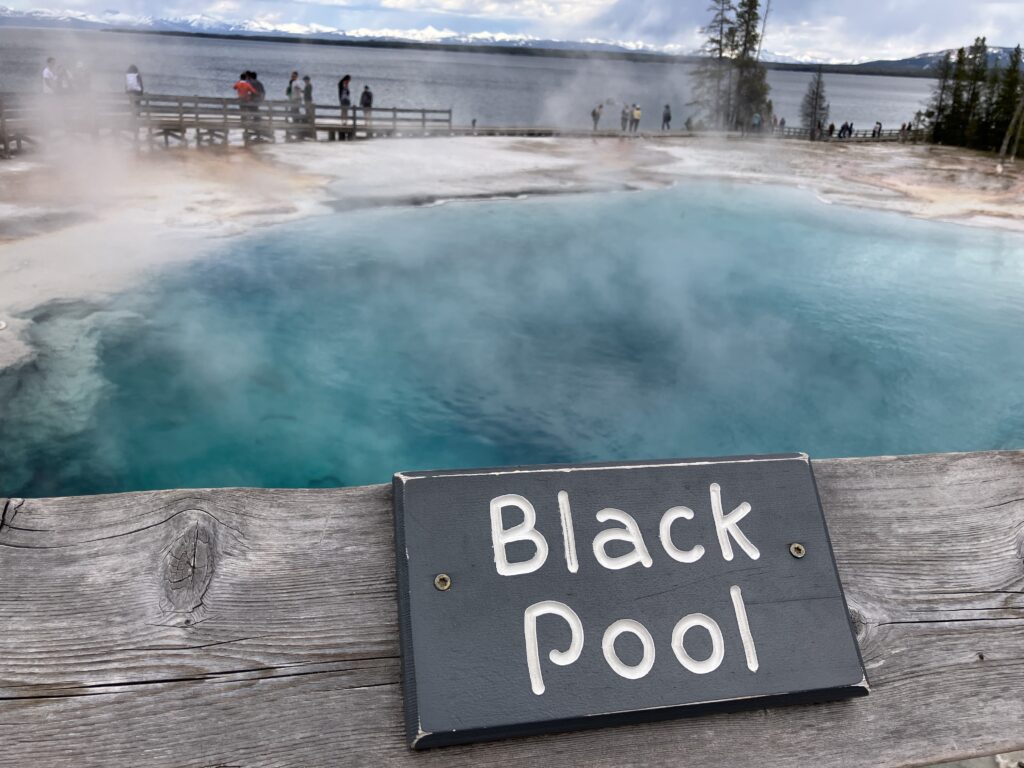


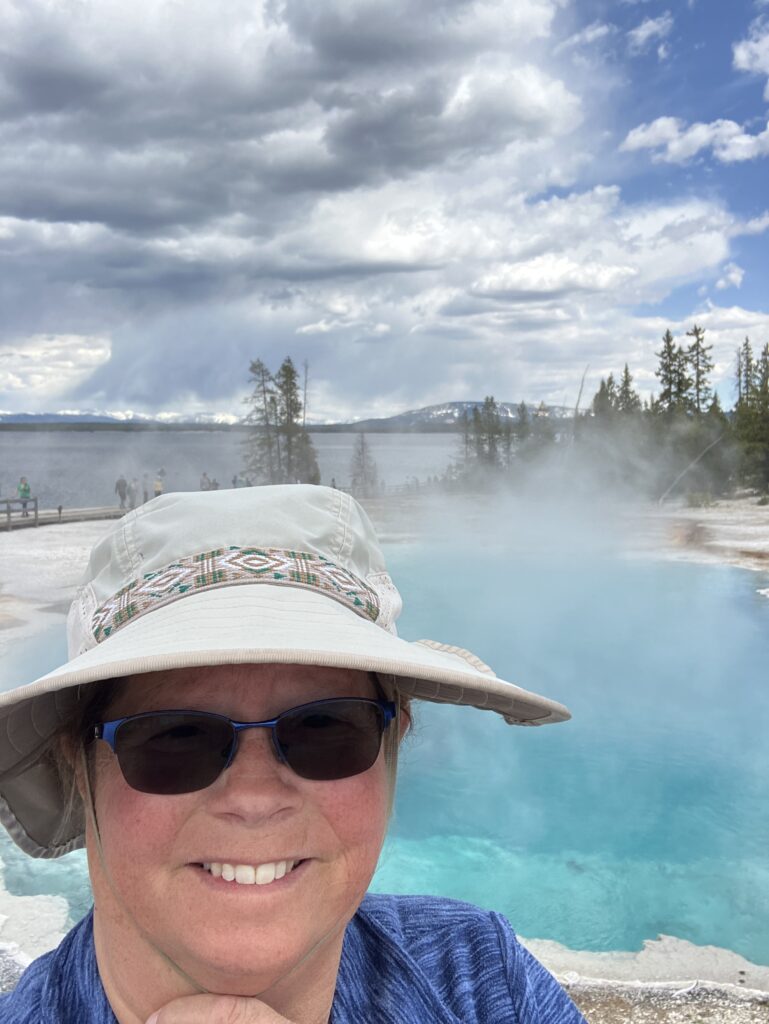
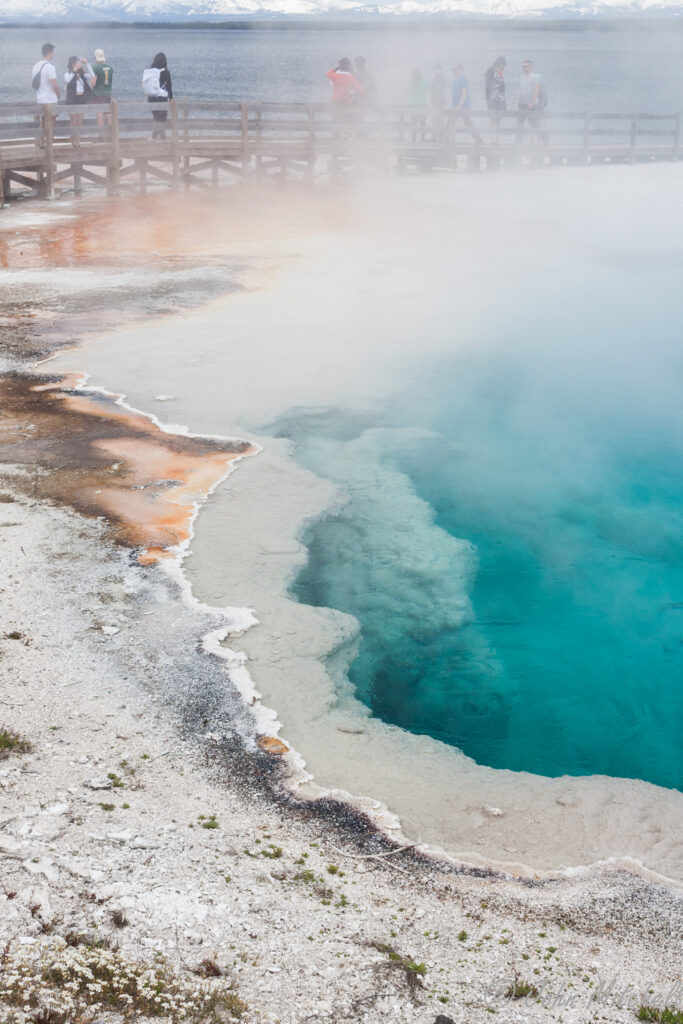
Abyss Pool looks nearly the same color as Black Pool.

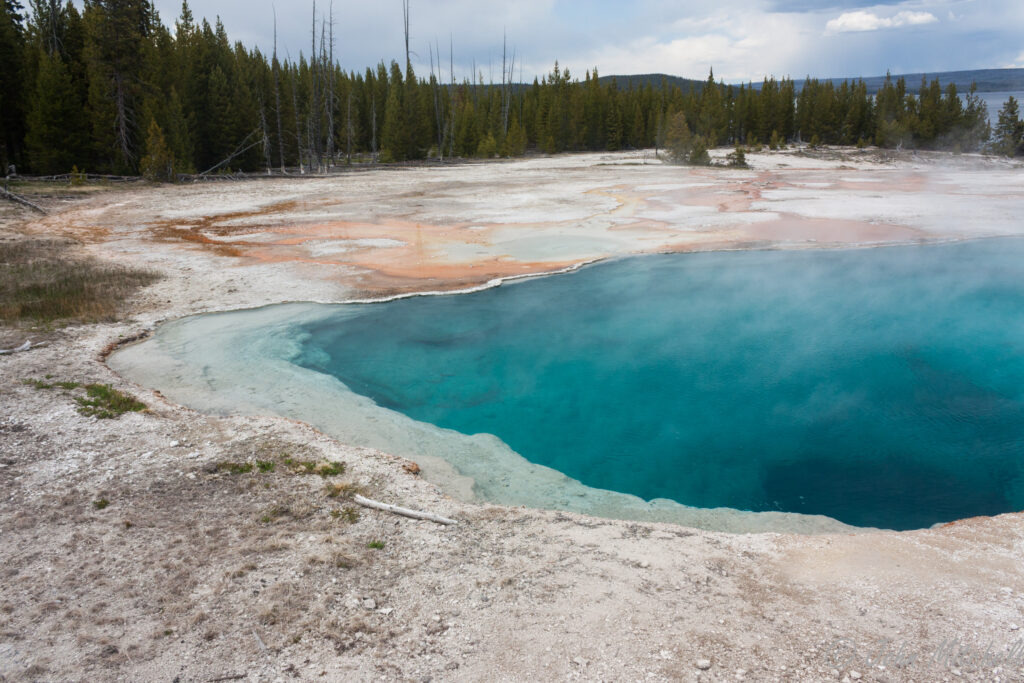
At the turn to cross the middle boardwalk, there is Twin Geyser. It was so boring that we forgot to take a picture of it.
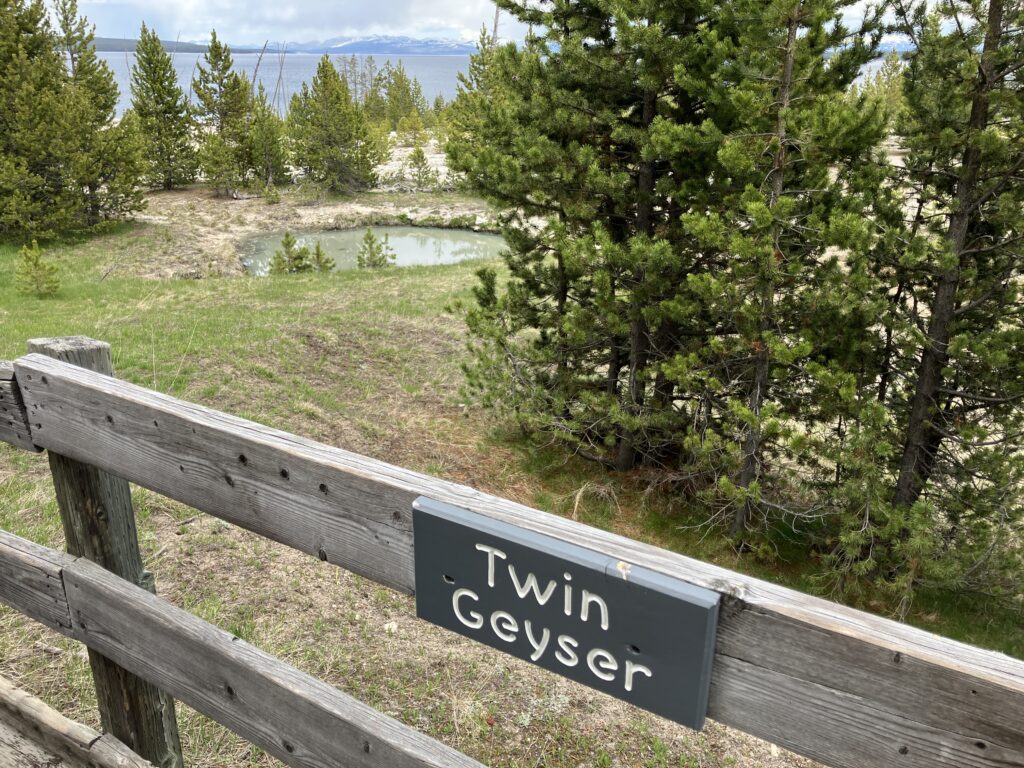
Through the middle were a series of smaller springs and some that appeared to have gone inactive.
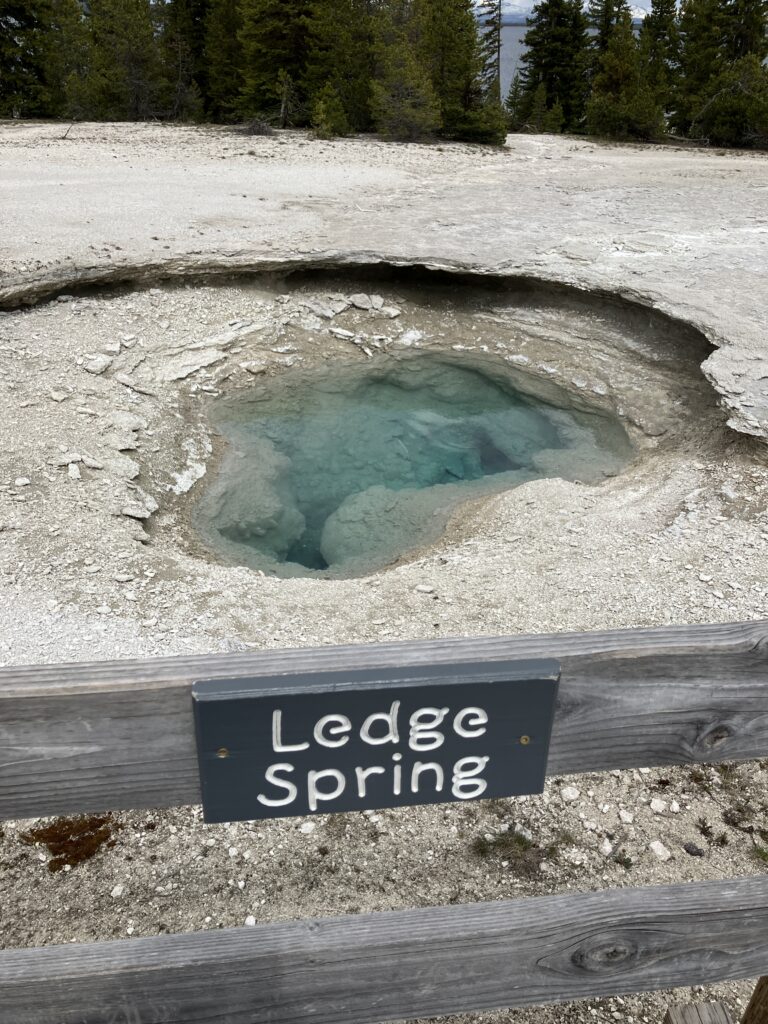
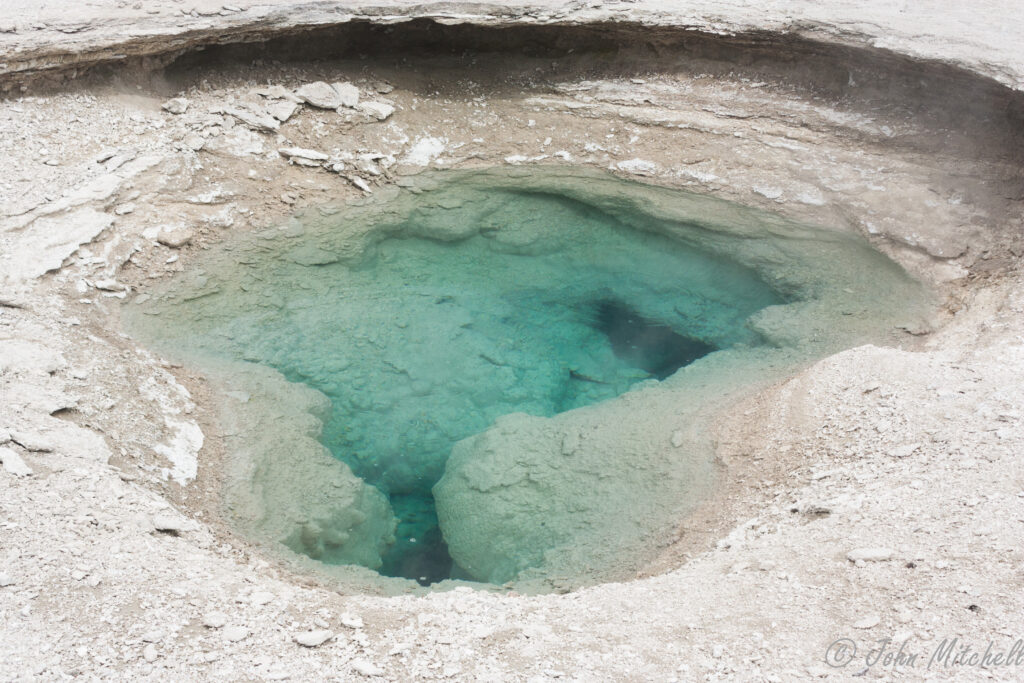
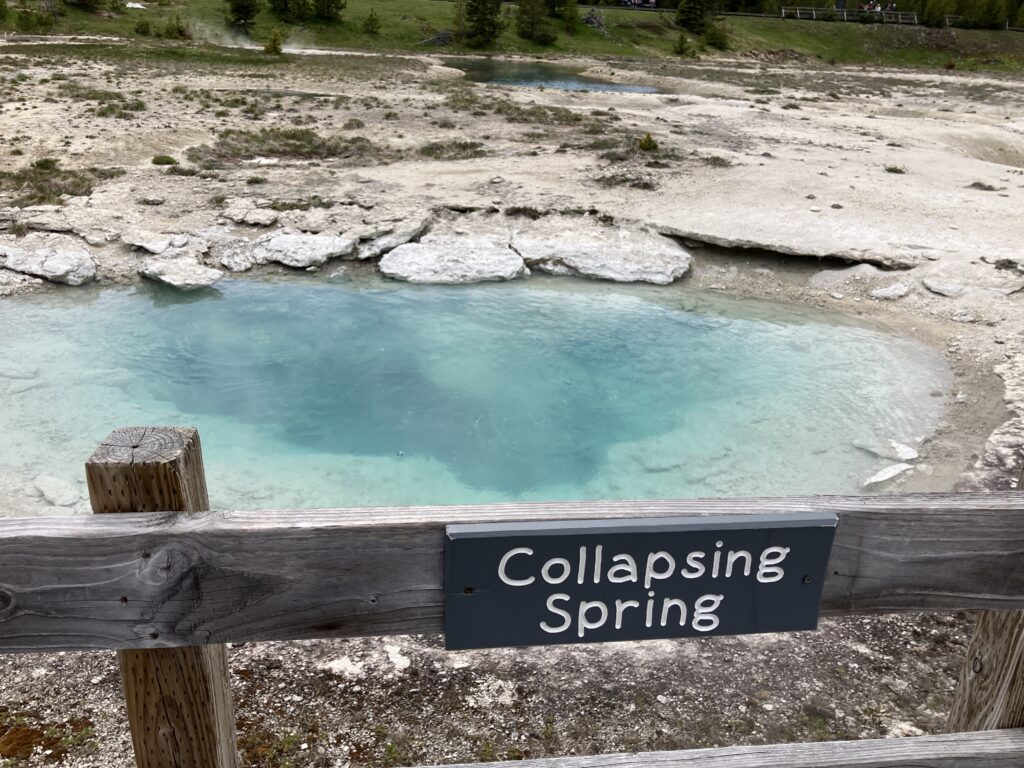

Some yellow flowers grow beside Surging Spring. They are either very hardy or about to die.


This unnamed feature looking like it had a cracked clay finish on top of the water.
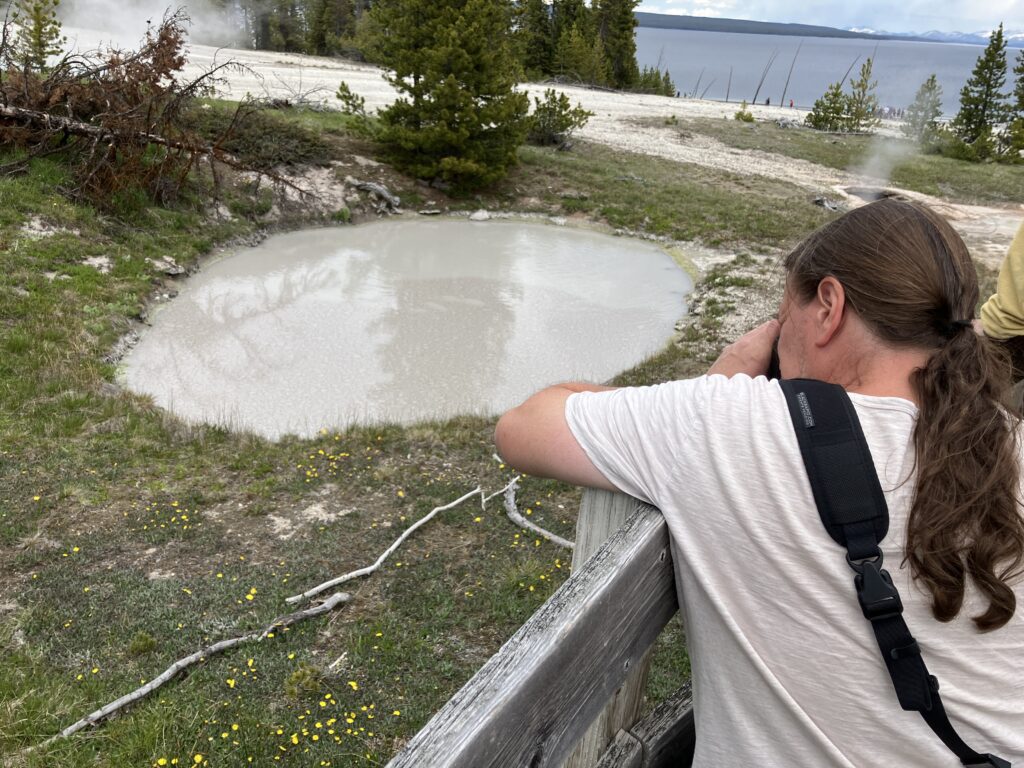
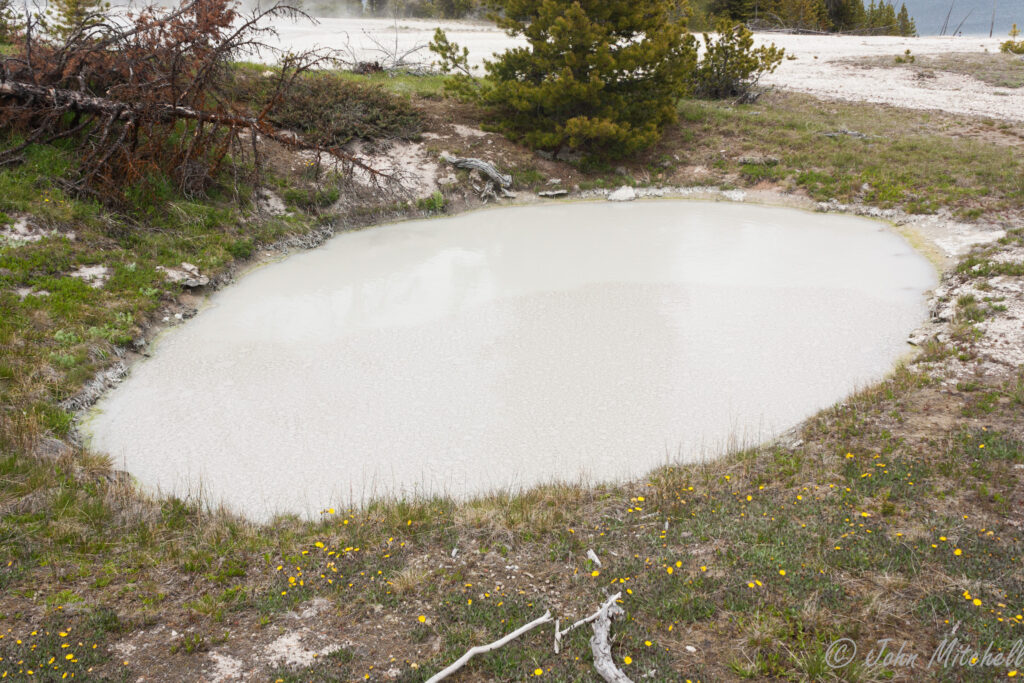
These are two unnamed features. The first is possibly the ugliest pool in the park along side a small pool connected to Mimulus Pool.


The information center where you can purchase park merchandise and obtain cancel stamp stickers was log cabin. The only bathrooms available were pit toilets, and they were smelly with long lines. (The sulphur from the hot springs smelled better than the toilets.) I opted to go to the Grant Visitor Center restrooms.
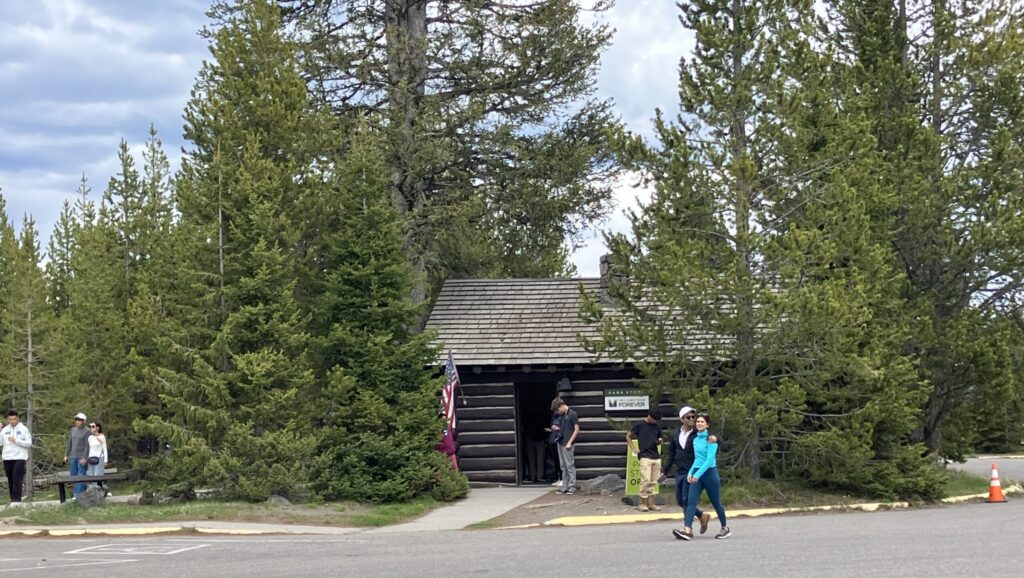
Afterwards we drove to the Grant Visitor Center which has a small museum and Park Rangers available to answer my many questions. The museum had a section on the history of forest fires in Yellowstone. It was quite interesting to see how many acres was burned with each fire. See Part 2 for more on this.
